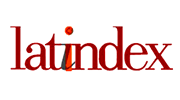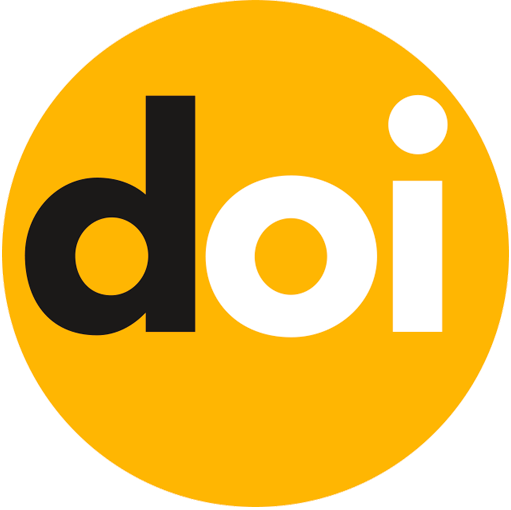Diretrizes para Autores
Diretrizes para autores
Baixe aqui o modelo de artigo.
1. Submissão de artigos
As propostas de artigos para publicação na Revista Direito em Movimento deverão ser enviadas através do sistema eletrônico de submissões (gratuitamente), por meio deste link. Não serão aceitas propostas enviadas por e-mail. A revista reserva-se o direito de aceitar ou rejeitar qualquer original recebido, de acordo com as recomendações do seu corpo editorial, inclusive por inadequação da temática do artigo ao perfil editorial da revista, como também o direito de propor eventuais alterações.
2. Qualificação dos autores
Até 31 de dezembro de 2025, a revista aceitava artigos com pelo menos um autor portador do título de doutor ou mestre, bem como trabalhos de alunos de mestrado ou pós-graduação lato sensu, desde que orientados por um professor doutor, que deveria constar como coautor.
A partir de 1º de janeiro de 2026, somente serão aceitos artigos de doutores, doutorandos, ou de mestres e mestrandos em coautoria com doutor(es). Essa atualização reforça o compromisso da revista com a qualidade científica e com suas metas de internacionalização e excelência editorial.
3. Ineditismo e exclusividade
Os textos para publicação na Revista Direito em Movimento deverão ser inéditos e para publicação exclusiva. Uma vez publicados nesta revista, também poderão ser inseridos em livros e coletâneas, desde que citada a publicação original. É proibida a publicação simultânea ou posterior em outras revistas e periódicos. As propostas de artigo não poderão ser submetidas de forma simultânea à análise de outras revistas.
4. Idiomas
Podem ser submetidos artigos redigidos em Português, Espanhol, Inglês, Alemão ou Francês.
5. Cadastro dos metadados no sistema eletrônico de submissões
No momento da submissão do artigo no sistema eletrônico, os campos dos metadados deverão ser preenchidos obrigatoriamente de acordo com estas diretrizes, sob pena de rejeição liminar da submissão:
a) Autores:
- Nome/Nome do Meio/Sobrenome: indicação do nome completo do(s) autor(es) apenas com as iniciais de cada nome em caixa alta. Em caso de artigos em coautoria, os nomes de todos os coautores devem ser inseridos no sistema na ordem que deverá constar no momento da publicação.
- E-mail: indicação do e-mail do(s) autor(es) para contato, que será obrigatoriamente divulgado na versão publicada do artigo;
- ORCID iD: indicação do número de identificação ORCID (para maiores informações clique aqui). O identificador ORCID pode ser obtido no registro ORCID. Você deve aceitar os padrões para apresentação de iD ORCID e incluir a URL completa (por exemplo: http://orcid.org/0000-0002-1825-0097).
- URL: link para o currículo completo do autor. No caso de autores brasileiros, deve ser indicado o link para o Currículo Lattes.
- Instituição/Afiliação: indicação da sua principal afiliação institucional ou das duas principais, caso o vínculo com ambas possua a mesma importância (instituição à qual encontra-se vinculado como docente ou discente, ou, caso não seja docente ou discente, a instituição onde foi obtido o seu maior título acadêmico, como doutorado, mestrado, especialização, etc.). O nome da instituição deverá constar por extenso e na língua original da instituição (ou em inglês quando a escrita não for latina), seguida da indicação do país de origem da instituição entre parênteses. Caso o autor seja docente e esteja cursando mestrado ou doutorado em outra instituição, a afiliação principal será a da instituição na qual o autor figura como mestrando ou doutorando.
- País: indicação do país da principal afiliação institucional do autor.
- Resumo da biografia: indicação do minicurrículo, no qual devem constar as titulações acadêmicas, começando pela mais elevada, o papel que cumpre na instituição de afiliação, e o ORCID.
b) Título e Resumo:
- Título: título no idioma do artigo, com todas as letras maiúsculas.
- Resumo: resumo no idioma do artigo, sem parágrafo ou citações e referências, de 100 a 250 palavras.
c) Indexação:
- Palavras-chave: indicação de 3 a 5 palavras-chave no idioma do artigo (em letras minúsculas e separadas por ponto e vírgula).
- Idioma: indicar a sigla correspondente ao idioma do artigo (Português=pt; English=en; Français=fr; Español=es).
d) Contribuidores e Agências de fomento:
Os artigos resultantes de projetos de pesquisa financiados deverão indicar neste campo a fonte de financiamento.
e) Referências:
Inserir a lista completa de referências citadas no artigo, dando um espaço entre cada uma delas. Ressalte-se que as referências devem seguir as normas técnicas brasileiras (ABNT NBR 6023:2018).
6. Apresentação do texto e elementos pré-textuais
a) Recomenda-se que o trabalho tenha entre 15 e 30 páginas (tamanho A4 - 21 cm × 29,7 cm), compreendendo a introdução, desenvolvimento, conclusão (não necessariamente com esses títulos) e uma lista de referências bibliográficas.
b) As margens utilizadas deverão ser: esquerda e superior de 3 cm e direita e inferior de 2 cm.
c) No corpo do texto deverá ser utilizada Fonte Times New Roman, tamanho 12, espaçamento entre linhas de 1,5, e espaçamento de 0 pt antes e depois dos parágrafos.
d) Nas notas de rodapé deverá ser utilizada Fonte Times New Roman, tamanho 10, espaçamento simples entre linhas.
e) No desenvolvimento do texto, os parágrafos deverão conter recuo de 1,5 cm em relação à margem esquerda. Títulos e subtítulos deverão estar alinhados à margem esquerda, sem recuo.
f) O título do artigo e o subtítulo (se houver) devem ser separados por dois-pontos. O título no idioma do artigo deve estar centralizado, em caixa-alta e negrito, fonte tamanho 14. Logo abaixo do título no idioma do texto, deve-se incluir o título em outro idioma, grafado com maiúsculas apenas na letra inicial e nos substantivos próprios, sem negrito e em itálico, fonte tamanho 14.
g) Nos casos de necessidade de indicar informações a respeito do artigo (financiamento por agências de fomento, agradecimentos, tradutores do texto, etc.), deverá ser inserida uma nota de rodapé com um asterisco (e não com número) situada à direita do título no idioma do artigo.
h) O artigo não deve incluir os nomes do(s) autor(es). As informações, para fins de publicação, serão retiradas dos metadados inseridos pelo(s) autor(es) no sistema eletrônico da revista no momento da submissão.
i) O resumo no idioma do artigo deve ser composto por uma sequência de frases concisas em parágrafo único, sem enumeração de tópicos e espaçamento entre linhas simples. Quanto à extensão, deve ter entre 100 e 250 palavras.
j) As palavras-chave, no mínimo 3 e no máximo 5, devem figurar logo abaixo do resumo, antecedidas da expressão “Palavras-chave” seguida de dois pontos. As palavras deverão ser grafadas com as iniciais em letra minúscula, com exceção dos substantivos próprios e nomes científicos, estar separadas entre si por ponto e vírgula e finalizadas por ponto.
k) O resumo em outro idioma deve ser apresentado em fonte Times New Roman 12, espaçamento entre linhas simples, sem parágrafo ou citações e referências, entre 100 e 250 palavras, antecedido da palavra “Abstract”, "Resumé", "Resumen", conforme o idioma escolhido. No caso de artigos redigidos em língua estrangeira, este elemento deverá ser substituído pelo resumo em português.
l) As palavras-chave em outro idioma, no mínimo 3 e no máximo 5, devem figurar logo abaixo do resumo em idioma estrangeiro, antecedidas pela expressão “Keywords”, "Mots-Clés", "Palabras clave" etc., conforme o idioma escolhido, seguida de dois-pontos. As palavras deverão separadas entre si por ponto e vírgula e finalizadas por ponto.
m) Desenvolvimento do trabalho científico: a numeração progressiva, em números arábicos, deve ser utilizada para evidenciar a sistematização do conteúdo do trabalho. Os títulos das seções primárias devem estar em caixa alta, alinhados à margem esquerda, sem recuo e em negrito. Os títulos das seções secundárias devem estar alinhados à margem esquerda, sem recuo e em negrito, somente com a letra inicial em caixa-alta (com exceção dos nomes próprios).
OBS. A introdução, a conclusão e as referências seguem a apresentação dos títulos das seções primárias, porém não deverão ser numeradas.
n) As palavras estrangeiras devem ser grafadas em itálico. Para ênfase ou destaque, usar negrito.
o) As ilustrações de qualquer tipo (desenhos, esquemas, fluxogramas, fotografias, gráficos, mapas, organogramas, plantas, quadros, retratos e outros), devem estar inseridas no texto, e não no final do documento na forma de anexos. Além disso, devem apresentar sua identificação e fonte na parte inferior.
p) Aplicam-se, para os demais aspectos, as normas técnicas brasileiras (ABNT NBR 14724:2011; NBR 6022:2018; NBR 6024:2003; NBR 6028:2021).Aplicam-se, para os demais aspectos, as normas técnicas brasileiras (ABNT NBR 14724:2011; NBR 6022:2018; NBR 6024:2003; NBR 6028:2021).
7. Citações e Referências
a) As citações e referências deverão seguir as normas técnicas brasileiras (ABNT 6023:2018 e ABNT 10520:2023).
b) As citações diretas, no texto, de até 3 linhas, devem estar contidas entre aspas duplas (“”). As aspas simples (‘’) são utilizadas apenas para indicar citação no interior da citação. As citações diretas com mais de três linhas devem estar destacadas com recuo de 4 cm da margem esquerda, sem aspas, com fonte tamanho 10. As citações (palavras, expressões, períodos) deverão ser cuidadosamente conferidas pelos autores e/ou tradutores.
c) As citações deverão ser indicadas no texto pelo sistema de chamada autor-data. Nesse sistema, a indicação da fonte é feita pelo sobrenome de cada autor seguido do ano de publicação do documento e da página da citação, no caso de citação direta, separados por vírgula e entre parênteses. Fica vedado o uso das expressões idem, ibidem, opus citatum e suas respectivas abreviações.
d) Deverão ser apresentadas apenas as referências de obras mencionadas no trabalho, em ordem alfabética por sobrenome do autor, espaçamento simples, sem recuo, alinhado à margem esquerda do texto, com um espaço simples entre cada referência, precedidas pela expressão "REFERÊNCIAS" em negrito, tamanho 12.
8. Redação
Os textos devem ser revisados, além de terem sua linguagem adequada a uma publicação editorial científica.
9. Artigos resultantes de pesquisas financiadas
Os artigos resultantes de projetos de pesquisa financiados deverão indicar em nota de rodapé, situada ao final do título do artigo no idioma do texto, a informação relativa ao financiamento da pesquisa.
10. Responsabilidade dos autores
a) Autores são responsáveis pelo conteúdo publicado, comprometendo-se, assim, a participar ativamente da discussão dos resultados de sua pesquisa científica, bem como do processo de revisão e aprovação da versão final do trabalho.
b) Autores são responsáveis pela condução, resultados e validade de toda investigação científica.
c) Autores devem noticiar a revista sobre qualquer conflito de interesse.
d) As opiniões emitidas pelos autores dos artigos são de sua exclusiva responsabilidade.
e) Ao submeter o artigo, o autor atesta que todas as afirmações contidas no manuscrito são verdadeiras ou baseadas em pesquisa com razoável exatidão.
11. Conflito de interesses
A confiabilidade pública no processo de revisão por pares e a credibilidade de artigos publicados dependem em parte de como os conflitos de interesses são administrados durante a redação, revisão por pares e tomada de decisões pelos editores.
a) É obrigatório que o autor do manuscrito declare a existência ou não de conflitos de interesse.
b) Conflitos de interesses podem surgir quando autores, pareceristas ou editores possuem interesses que, aparentes ou não, podem influenciar a elaboração ou avaliação de manuscritos. O conflito de interesses pode ser de natureza pessoal, comercial, política, acadêmica ou financeira.
c) Quando os autores submetem um manuscrito, eles são responsáveis por reconhecer e revelar conflitos financeiros ou de outra natureza que possam ter influenciado seu trabalho.
d) Os autores devem reconhecer no manuscrito todo o apoio financeiro para o trabalho e outras conexões financeiras ou pessoais com relação à pesquisa. As contribuições de pessoas que são mencionadas nos agradecimentos por sua assistência na pesquisa devem ser descritas, e seu consentimento para publicação deve ser documentado.
e) Manuscritos não serão rejeitados simplesmente por haver um conflito de interesses, mas deverá ser feita uma declaração de que há ou não conflito de interesses.
f) Os pareceristas devem, igualmente, revelar aos editores quaisquer conflitos de interesse que poderiam influir em suas opiniões sobre o manuscrito, e devem declarar-se não qualificados para revisar originais específicos se acreditarem que esse procedimento é apropriado. Assim como no caso dos autores, se houver silêncio por parte dos pareceristas sobre conflitos potenciais, isso significará que os conflitos não existem.
g) No caso da identificação de conflito de interesse da parte dos pareceristas, o Conselho Editorial encaminhará o manuscrito a outro parecerista ad hoc.
h) Se os autores não estiverem certos do que pode constituir um potencial conflito de interesses, devem contatar a Equipe da Revista.
i) Para os casos em que editores ou algum outro membro publiquem com frequência na Revista, não serão atribuídos tratamentos especiais ou diferenciados. Todos os artigos submetidos serão avaliados através do procedimento duplo-anônimo.
12. Processo de avaliação
O processo de avaliação é realizado em duas etapas. A primeira diz respeito ao parecer de pertinência (desk review), e a segunda, à avaliação ad hoc.
A Revista Direito em Movimento conta com a colaboração de avaliadores externos de outras instituições ou países.
Todos os artigos, após a submissão, passam pela primeira avaliação, na qual são verificados os seguintes quesitos: enquadramento ao escopo; apresentação dos requisitos básicos de forma, que devem estar de acordo com as "Diretrizes para os Autores"; originalidade, por meio da verificação de plágio pelo sistema Plagius. Essa triagem e o encaminhamento para os avaliadores ad hoc é realizada pelo editor responsável pelo processo editorial de cada submissão. Para essa primeira etapa é estimado um tempo médio de 15 dias.
Na segunda etapa, a avaliação dos artigos é realizada anonimamente, momento no qual nem os revisores nem os autores serão reconhecidos entre si. Nessa fase, são observados nos artigos os seguintes critérios:
- relevância do tema;
- qualidade da metodologia utilizada;
- clareza do texto;
- adequação às normas editoriais da Revista.
Para essa segunda etapa, o tempo médio é de 1-4 meses. Os pareceres dos artigos submetidos em idioma estrangeiro serão formulados no idioma do texto ou em português. O manuscrito é revisado por dois ou mais especialistas no tema em questão. Se o manuscrito for aprovado por um revisor e rejeitado pelo outro, caberá a um terceiro revisor decidir pela aprovação ou rejeição. O editor de seção poderá solicitar mais revisões para desempatar o processo ou solicitar voto de minerva de um membro do Conselho Editorial.
AVALIAÇÃO NA PRIMEIRA ETAPA (DESK REVIEW):
Na primeira etapa da avaliação há três resultados possíveis:
- Rejeitado. A rejeição sugerida pelos avaliadores será baseada na análise prévia, adequação às normas, aderência à linha editorial da revista, entre outros. No caso de rejeição, o artigo não será publicado, apenas no caso da adequação ao formato, quando poderá ser ajustado e enviado para a segunda fase.
- Nova submissão. Manuscritos que se encaixam no escopo da revista, porém precisam de grandes revisões na escrita e na metodologia precisam de novas rodadas de avaliação. Nesse caso é sugerido pelo editor, o envio do manuscrito como uma Nova Submissão começando o processo novamente.
- Classificado para segunda fase. O manuscrito continua para avaliação por pares.
AVALIAÇÃO NA SEGUNDA ETAPA (PARES CIENTÍFICOS):
Os artigos que forem para a segunda etapa podem ser:
- Rejeitados. A rejeição sugerida pelos avaliadores será baseada na análise do conteúdo, com foco na metodologia e na validade dos dados, devendo também considerar a originalidade. O parecer de rejeição pode ser apresentado aos autores, desde que estes o solicitem.
- Aprovados diretamente aceitos. Quando existem apenas pequenas correções que não precisem de outras rodadas de avaliação. A aprovação direta não requer quaisquer ajustes de conteúdo, os autores são avisados sobre a decisão e o artigo segue para os processos seguintes.
- Aceitos com modificações. Os artigos aprovados com modificações serão reencaminhados aos autores com as considerações dos revisores. A revista não tem qualquer influência sobre o método de avaliação dos revisores, somente os orienta sobre os seus princípios norteadores, expostos no foco, escopo e nas diretrizes para os autores, que devem ser respeitados. Após as correções, o autor reenvia o artigo à revista para verificação do editor e dos revisores, caso estes últimos assim determinem. Sendo aprovado, segue para publicação.
13. Revisão do manuscrito para publicação
Os artigos aprovados para publicação passam por revisão gramatical e de formatação conforme as normas da ABNT, à qual os autores estão sujeitos. Essa revisão tem por objetivo garantir clareza, correção linguística e uniformidade editorial, sem alterar ou acrescentar conteúdo ao texto.
Quando forem identificadas ausências de informações ou a necessidade de ajustes substanciais, o manuscrito será devolvido ao autor responsável, por e-mail, para complementação ou correção.
As modificações solicitadas devem ser realizadas e devolvidas no prazo máximo de 72 horas após o recebimento do e-mail. Na ausência de resposta dentro desse prazo, a equipe administrativa considerará a versão encaminhada como definitiva.
14. Periodicidade e prazo para a apresentação do material à revista
A Direito em Movimento é atualmente um periódico na modalidade de publicação contínua (PC), publicando artigos em um único volume anual. A Revista recebe artigos em fluxo contínuo.
15. Política de Privacidade
Os nomes e endereços informados nesta revista serão usados exclusivamente para os serviços prestados por esta publicação, não sendo disponibilizados para outras finalidades ou a terceiros.
Leia mais em nossas políticas editoriais.
Em caso de dificuldades com o processo, entre em contato com direitoemmovimento@tjrj.jus.br para suporte.
















